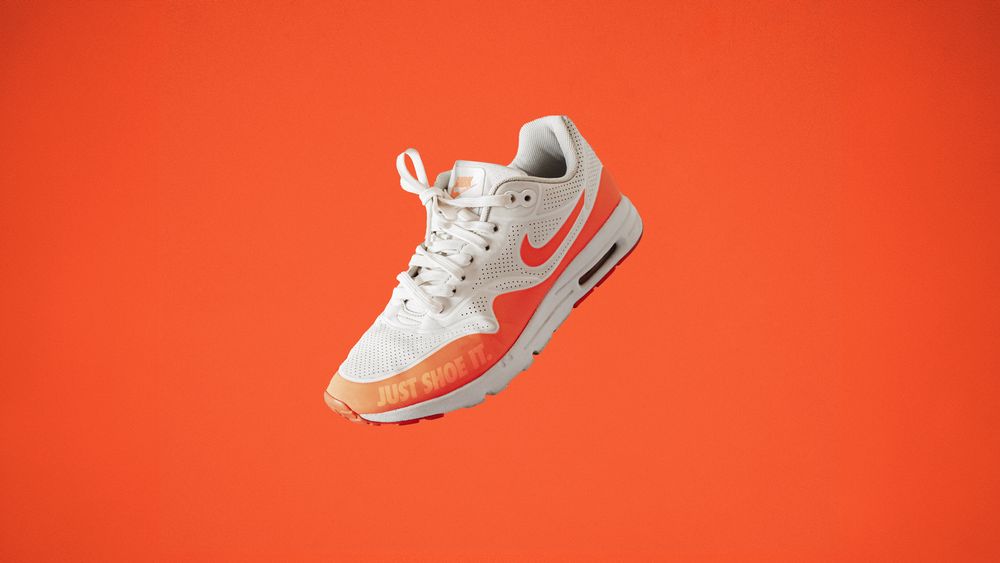Just Do It.
It's what the boss says when you tell her you don't think your logo needs a tagline attached to it.
Try a good one-liner on for size, and before you know it, everyone says, "I'm lovin' it!" and immediately attaches it permanently to every version of your logo ever. It becomes a permanent fixture of your brand identity and shows up every time your name is mentioned.
Should your tagline be a part of your logo? Or do you need a tagline at all?
Odds are, you'll create some tense moments if you invite enough marketers into the conversation. Of course, we want our brand to be known for that iconic statement, but until we know where we will use it, why we will use it, and what it will accomplish, we don't yet know if we need it at all.
Let's talk it through.
Let's start with the old "tagline built into the logo" situation. I don’t like logos with lots of detail because it reduces the chances of people absorbing the information. People remember faces better than they remember every freckle, and in the same way, people eventually recognize a logo, but they rarely read it. Aim too high for a logo with the cool factor, and before you know it, your new brand is the next affliction T-Shirt; great for someone, but I don't know what I'm looking at. The same principle applies to every element that is packed in with your logo, such as taglines. Too much detail is too much to process. That's why a tagline permanently attached to your logo must be deemed necessary before you let it take up space.
What's the purpose of a tagline?
When you need to get your message across to customers in the most succinct way possible, you need a brief statement that communicates your value, establishes your brand voice, and helps to identify your place in the market. What's more, such a statement is most effective when it is repeated so that you can achieve the sticky effect.
So let's summarize. It's brief. It sets the tone. Helps with positioning. Sounds cool as a sign-off. If you want the message to stick, a tagline is your guy.
Where does a tagline go?
But this simple explanation works perfectly in a brand book but needs additional thought when applied to real life. Every time your logo makes an appearance, it appears in context. Consider the following examples.
- Your Website. Here, you control the narrative, and you aren't restricted to a short headline, but you may open with one. So depending on this month's goals, your leading headline on the home page (to oversimplify web content) may be "Order now for 25% off!" or it may be "The best products available online." Either way, your tagline is not vital here any more than you need to remind house guests of your last name.
- Sponsorships. For most sponsorships, your space is limited, and often the opportunity for nothing more than logo placement. A tagline may reduce the visibility of your logo and might not support your overall goal of brand name recognition.
- Display ads. The simplest format for an ad includes a lead statement, a payoff, and a call to action. Each ad has a specific goal that can change from one to the next. If the message is not the tagline itself, you risk any additional content competing with the key message – an important consideration before adding in something like a tagline. In some ads, you need it, but often the ad strategy is the tagline, and each strategy, over time, creates a fresh message.
- A sign-off to everything. Not everyone is Walter Cronkite, but if you can create a message that has the same impact as his unforgettable "And that's the way it is," then I say just do it, but if your tagline is nothing more than a way to describe what you do, consider all the ways you are already doing that in context, and do your best not to be redundant, unnecessarily.
It is possible that you will find you need a logo with a tagline built into the format. But you'll find there is much more to consider because of the context where your brand is being seen. When spacing allows, something such as a large banner at a ballpark or on a cart at a local grocery store where the user is continuously looking down at your logo placement, a tagline may make sense. But in each case, the spacing of the sponsorship will require some additional consideration.
Lastly, I want to talk about building a brand. Think of your brand like a Nike logo in an ad. I know it's an unfair comparison. A Nike logo does not say "Athletic Shoes." What they do is present it with ads of shoes, a headline about what you will do with those shoes, so that when you see it by itself, you know what the brand means. In the case of your brand, what you think is obscure may be pretty clear, and what you think is clear may be too busy.
This Nike ad sounds pretty clear by itself and may not need a descriptor, but since we are admittedly not Nike, we probably do need to describe what our brands offer. If that is the case, it will be much clearer when it is separated from the logo and treated more like a key message inside of a layout that delivers your brand message clearly. In other words, in a strategic advertising campaign.



